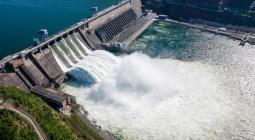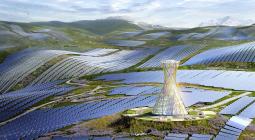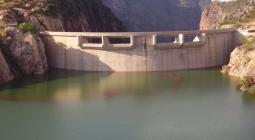Europe’s rivers at risk due to hydropower plants, human interference
While only around a third of the world’s rivers remain free-flowing, according to the campaign group International Rivers, the situation is worse in Europe, where the number of ‘wild’ or free-flowing rivers continue to dwindle.
Most of these wild rivers, waterways not impeded by human-made interference, are in the Western Balkans, according to Branka Španiček of CEE Bankwatch Network, which monitors public finance bodies and tries to stop projects it sees as likely to damage the environment, including dams.
“The River Bosna in Bosnia and Herzegovina is one of the few large rivers with no hydropower plants or other barriers restricting its flow,” said Španiček, Bankwatch’s strategic area leader – finance and biodiversity.
In Albania, the Vjosa River, stretching from Greece to the Adriatic Sea, is also considered the last, or one of the last, rivers of this type.
Flowing free for around 200 kilometres, the Vjosa and its surrounding environment are home to over a thousand animal and plant species, including 15 listed as threatened.
The Albanian government designated The Vjosa a National Park in 2023, culminating years of campaigning backed by local people, environmentalists and hiking gear maker Patagonia.
Beth Thoren, Patagonia’s director of environmental action, EMEA [Europe, Middle East, Africa], said the company got involved as rivers in the region “were being threatened by thousands of small hydropower projects – an expensive and ineffective way to generate energy.”
Europe was industrialised before other continents – a head start that in some cases can be measured in not only decades but centuries – meaning its rivers have been affected by dams, hydropower plants, reservoirs, diverting and channelisation for a lot longer and to a greater extent than elsewhere.
“Earlier and more prolonged industrialisation in Europe has had a significant impact on its rivers, resulting in relatively fewer wild or untainted rivers compared to other parts of the world,” said Monti Aguirre of International Rivers, which “protects rivers and defends the rights of communities that depend on them.”
“We have about 28,000 power plants in Europe, and almost all the rivers have been dammed or diverted,” said Ulrich Eichelmann of RiverWatch, who has fought for four decades to prevent more damage being done to Europe’s waterways.
Eichelmann said damage to rivers has been easier to overlook than to other habitats, partly because the effects of dams and reservoirs are not so apparent to the untrained eye or at first glance.
And hydropower has long been perceived as a relatively “clean” source of energy and electricity, at least compared to oil and coal.
Eichelmann said that people can be misled by the often clear and still waters well deep behind a dam wall.
He said what lies beneath the surface is a “desert,” at least compared to the “dynamic ecosystem” of an unimpeded river.
According to The Nature Conservancy, rivers and their watersheds “are some of the most undervalued natural systems on Earth.”
But there have been some positive developments in recent years.
According to Aguirre, “conservation efforts and environmental policies in Europe have improved over time, leading to initiatives aimed at restoring and protecting river ecosystems,” such as the EU’s restoration code.
The Vjosa example could be one to follow: Španiček said over 80 rivers in the so-called Emerald Network in the Western Balkans “should be protected.”
“We have seen a change in financing hydropower development – the European Bank for Reconstruction and Development (EBRD) and European Investment Bank (EIB) have tightened their environmental safeguards and have backed out of financing several large hydropower projects in the Western Balkans,” Španiček said.
While the concern in Europe nowadays is from dozens of small hydropower plants in the Balkans – barely worth it curiosities that would generate very little electricity relative to the continent’s needs – regions such as Latin America and Southeast Asia are seeing the building of colossal dams, many of them Chinese-built.
In the case of the Mekong, these behemoths are upending ecosystems and agriculture from southern China through Laos, Thailand, Cambodia and Vietnam.
What Eichelmann described as “the sheer power of China” and “big business” makes it difficult to stop such projects.
If the US removes hydroelectric dams from the near-1,800 kilometre Snake River – something officials in Washington, DC, have started to look at doing – it could be something for Europe to emulate.
Rivers can recover their former dynamism if dams are taken away and allowed to flow naturally again, according to Eichelmann.
“It’s simply a question whether we want to have rivers in the future, ” he said.
Cover photo: [shutterstock_1898268388]





